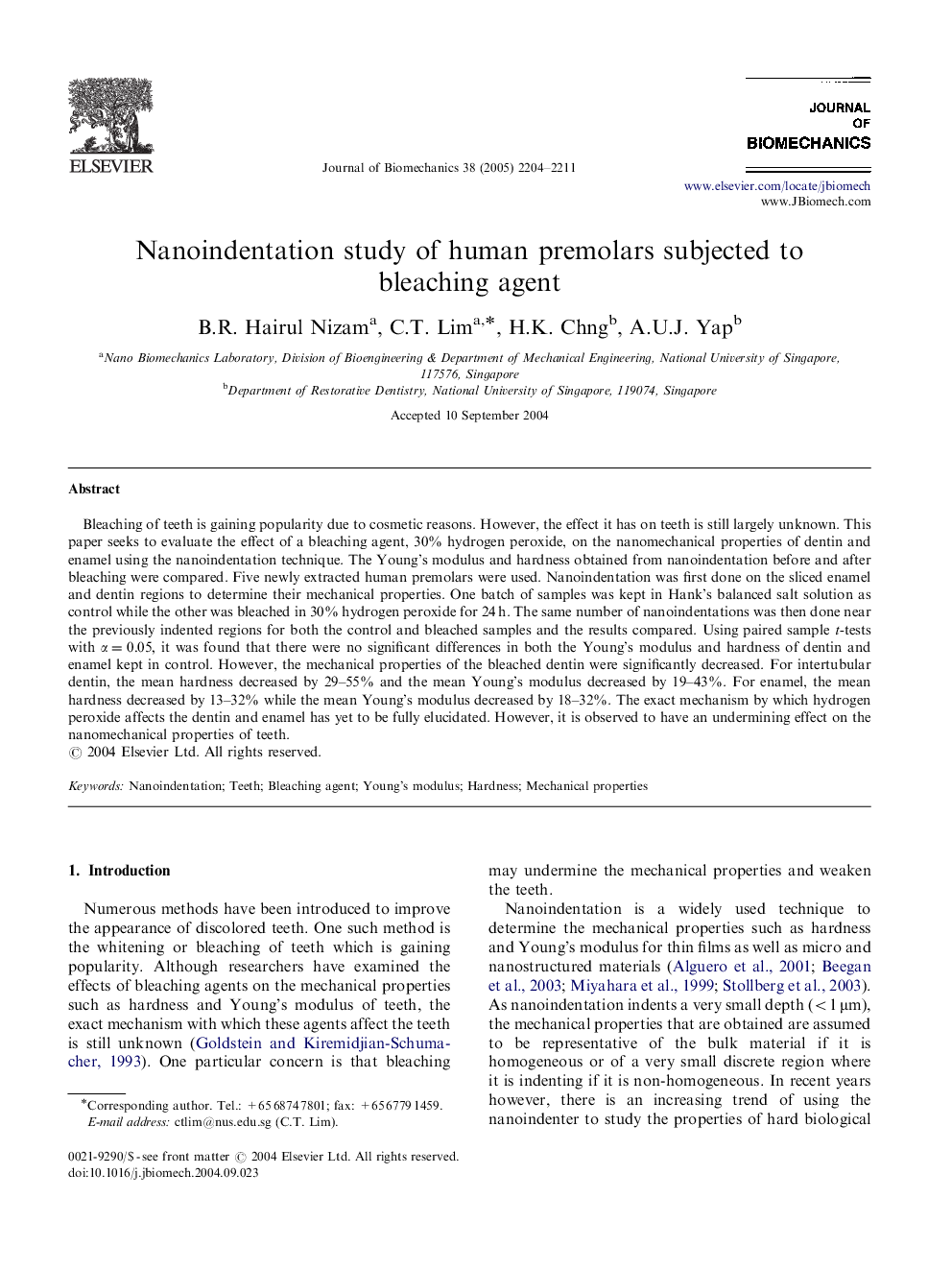| Article ID | Journal | Published Year | Pages | File Type |
|---|---|---|---|---|
| 875562 | Journal of Biomechanics | 2005 | 8 Pages |
Bleaching of teeth is gaining popularity due to cosmetic reasons. However, the effect it has on teeth is still largely unknown. This paper seeks to evaluate the effect of a bleaching agent, 30% hydrogen peroxide, on the nanomechanical properties of dentin and enamel using the nanoindentation technique. The Young's modulus and hardness obtained from nanoindentation before and after bleaching were compared. Five newly extracted human premolars were used. Nanoindentation was first done on the sliced enamel and dentin regions to determine their mechanical properties. One batch of samples was kept in Hank's balanced salt solution as control while the other was bleached in 30% hydrogen peroxide for 24 h. The same number of nanoindentations was then done near the previously indented regions for both the control and bleached samples and the results compared. Using paired sample t -tests with α=0.05α=0.05, it was found that there were no significant differences in both the Young's modulus and hardness of dentin and enamel kept in control. However, the mechanical properties of the bleached dentin were significantly decreased. For intertubular dentin, the mean hardness decreased by 29–55% and the mean Young's modulus decreased by 19–43%. For enamel, the mean hardness decreased by 13–32% while the mean Young's modulus decreased by 18–32%. The exact mechanism by which hydrogen peroxide affects the dentin and enamel has yet to be fully elucidated. However, it is observed to have an undermining effect on the nanomechanical properties of teeth.
